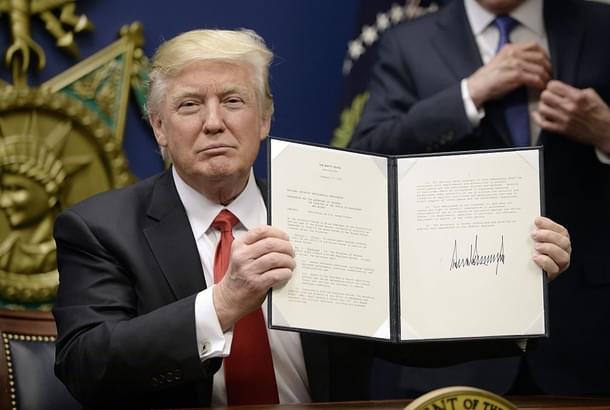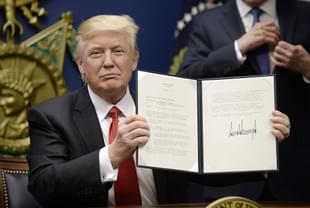Insta
Who Will Benefit Most From Trump’s Radical Tax “Reform”? Critics Say Only The Top 1 Per Cent
Swarajya Staff
Sep 30, 2017, 01:49 PM | Updated 01:49 PM IST
Save & read from anywhere!
Bookmark stories for easy access on any device or the Swarajya app.


The Donald Trump administration along with the Republicans announced a new tax plan on Wednesday (27 September) after weeks of negotiation. The new framework unveiled by President Trump was prepared by a group of six Republican policymakers including Treasury Secretary Steve Mnuchin, House Speaker Paul Ryan and Senate Majority Leader Mitch McConnell.
The new tax plan proposed to merge the seven individual income tax rates into three (12 per cent, 25 per cent and 35 per cent). Another bracket, over 35 per cent, may be added by Congress to make the plan more progressive. Personal exemption to the tune of $4,050 per person for households in deductions will be eliminated. This will be replaced by an increase in standard deduction, which has been proposed to be raised to (almost twice of what it is at present) $24,000 for couples and $12,000 for individuals.
Additionally, the child tax credit, currently $1,000, will be increased to a higher level that hasn’t been specified yet. Almost all itemised tax deductions including the deduction for state and local taxes would be eliminated, except the ones for mortgage interest and charitable deductions.
The new plan is a bonanza for the ultra rich. The individual and corporate alternative minimum taxes, extra taxes on certain affluent households, are proposed to be eliminated along with estate and gift taxes paid on very wealthy estates.
The framework proposes to drastically cut corporate tax rate from 35 per cent to 20 per cent.
Trump has hailed his tax reform as a boon for middle-class Americans. “The biggest winners will be everyday working families, as jobs start pouring into our country,” Trump said. But a preliminary analysis of the unified framework shows that the richest 1 per cent will benefit the most while taxes would actually go up for the middle-class families. The report states that:
- The tax reform would reduce federal revenues by $2.4 trillion over the first 10 years and $3.2 trillion over the subsequent decade, with business income tax provisions alone reducing revenues by $2.6 trillion in the first decade.
- The individual income tax provisions (excluding those related to business income) would increase revenues by about $470 billion over the same period; however, elimination of estate and gift taxes would cost the treasury dear by another $240 billion.
- Taxpayers in the top 1 per cent (incomes over $730,000) would receive about 50 per cent of the total tax benefit; their after-tax income would increase by an average of 8.5 per cent.
- In the first decade, the average tax cut as a share of after-tax income would fall for all income groups other than for the top 1 per cent.
- In 2027, taxpayers with incomes between about $150,000 and $300,000 would experience a slight tax increase on average.
It is no surprise then that a new poll by Pew Research Center found that a majority of Americans are not in favour of cutting taxes for the super rich. According to the poll, 52 per cent say taxes should in fact go up for the large corporations. Forty-three per cent are in favour of raising the tax on households earning more than $250,000.
Though the Republicans are less supportive of tax increase for the rich compared to the Democrats, a majority of them do not like the idea of tax cuts for the affluent groups.





